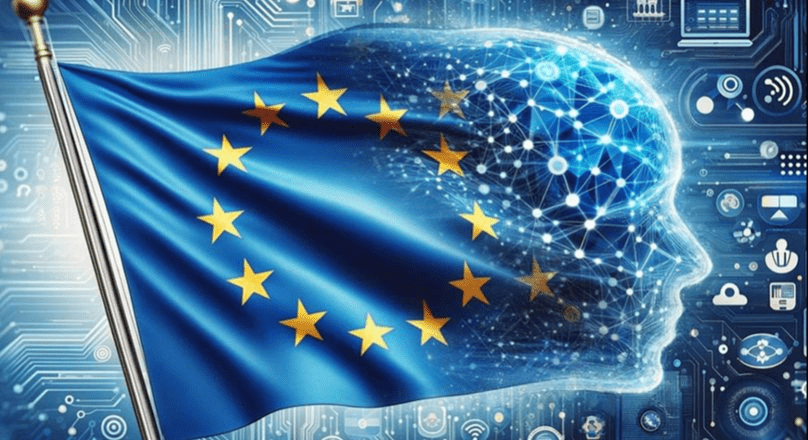
Dual-Edged Potential of AI
Artificial Intelligence (AI) represents a dual-edged sword in the modern technological landscape; it brings unparalleled innovation alongside significant risks. As AI continues to evolve, balancing its transformative potential with robust risk management frameworks becomes crucial to harnessing its benefits while safeguarding against its inherent dangers; on Tuesday (May 21), the Council of the European Union took a significant step towards this balancing act, setting a global benchmark by approving a groundbreaking law aimed at harmonising rules on AI.
The AI Act: Aim and Scope
This landmark legislation follows a ‘risk-based’ approach, meaning the higher the potential harm to society, the stricter the regulations; the law aims to foster the development and uptake of safe and trustworthy AI systems across the EU’s single market by both private and public actors, ensuring this fast-evolving technology can flourish and boost European innovation; simultaneously, it aims to protect the fundamental rights of EU citizens while stimulating investment and innovation in AI across Europe.
The AI Act also provides for an innovation-friendly legal framework and aims to promote evidence-based regulatory learning; it foresees that AI regulatory sandboxes—enabling a controlled environment for the development, testing, and validation of innovative AI systems—should allow for the testing of innovative AI systems in real-world conditions; this approach ensures that the development of AI is not stifled but rather encouraged in a manner that prioritizes safety and accountability.
Risk-Based Categorization
How will the AI Act differentiate the risks of AI systems?; the legislation plans to categorize AI systems according to their risk levels; AI systems with limited risk will face minimal transparency obligations, whereas high-risk AI systems will need to meet a set of stringent requirements and obligations to gain access to the EU market.
For instance, AI systems such as cognitive behavioural manipulation and social scoring will be banned due to their unacceptable risk levels; the law also prohibits using AI for predictive policing based on profiling and systems that use biometric data to categorize people by race, religion, or sexual orientation; this risk-based approach ensures that higher-risk AI applications are subject to the highest level of scrutiny and regulation.
Global Implications and Compliance
Who will the AI Act apply to?; the new legislation will be primarily applicable to the 27 members of the European Union; however, its impact will have a global reach, far beyond the 27-country bloc; according to a Reuters report, companies outside the EU that use EU customer data in their AI platforms will need to comply; other countries and regions are likely to use the AI Act as a blueprint as well.
This comprehensive approach ensures that global companies seeking access to the EU market will have to comply with these stringent rules; in essence, the EU’s legislation could set the standard for global AI governance, encouraging other regions to adopt similar frameworks, thereby creating a more unified and robust global approach to AI risk management.
Enforcement Mechanisms
How will the AI Act enforce the rules?; to ensure proper enforcement, several governing bodies will be established; these include an AI Office within the European Commission to enforce common rules across the EU; a scientific panel to support enforcement activities; an AI Board with representatives from member states to advise on the consistent application of the AI Act; finally, an advisory forum for stakeholders to provide technical expertise to the AI Board and the Commission.
These institutions will play a critical role in ensuring that the AI Act is effectively implemented and that its rules are consistently applied across all member states; they will also provide a platform for ongoing dialogue and adaptation as AI technology continues to evolve, ensuring that the regulatory framework remains relevant and effective.
Penalties for Non-Compliance
How will the rulebreakers be penalised?; the fines for infringements to the AI Act are set as a percentage of the offending company’s global annual turnover in the previous financial year or a predetermined amount, whichever is higher; SMEs and start-ups are subject to proportional administrative fines; this approach ensures that the penalties are significant enough to deter non-compliance while being fair and proportional to the size and capabilities of the offending companies.
The financial penalties serve as a powerful deterrent, ensuring that companies prioritize compliance with the AI Act’s stringent requirements; this will help to maintain a high level of trust and safety in the AI systems that are developed and deployed across the EU market.
Implementation Timeline
When will the AI Act be implemented?; after being signed by the presidents of the European Parliament and of the Council, the legislative act will be published in the EU’s Official Journal in the coming days and enter into force twenty days after this publication; the new regulation will apply two years after its entry into force, with some exceptions for specific provisions; this phased approach provides ample time for companies and regulatory bodies to prepare for compliance, ensuring a smooth and effective transition to the new regulatory framework.
HAL149 can help businesses by developing customized AI assistants to automate tasks like customer service and lead generation, boosting efficiency and growth; contact us at https://hal149.com or email at hola@hal149.com.
